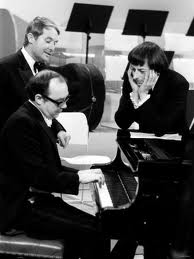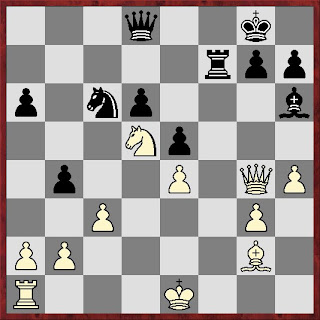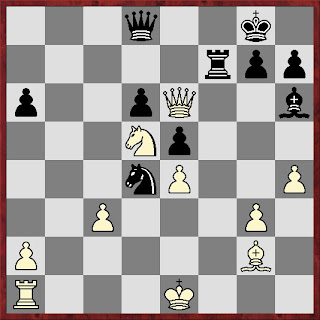 |
| “You’re playing all the wrong notes!” |
Some readers may be familiar with the classic Morecambe and Wise comedy sketch from their 1971 Christmas show. It’s the one with Andre Previn and the London Symphony Orchestra. Eric Morecambe is going to play Greig’s piano concerto and Previn is conducting. Of course the joke is that, despite his confident posturing Morecambe doesn’t have a clue what he is doing. After a series of excuses and prevaricating antics Previn finally looses his cool and says.
“You’re playing all the wrong notes!”
In response Morecambe comically draws himself up on his toes, puffs out his chest, performs that little comic aside that he does to camera where he pushes his spectacles back up his nose and then grabs Previn firmly by the lapels of his dinner jacket and says…
“I’m playing all the right notes, but not necessarily in the right order.”
How many times could every chess player ruefully exclaim the appropriate paraphrase of that punch line at the end of a game? The order moves are played in in a chess game are just as important as the moves themselves. Last Wednesday I was the beneficiary of just such a move syntax error. Take a look at the position below which developed out of a Sicilian Sveshnikov.
 |
| Intermezzo vs. O.P.Ponent. Position after Black’s 21st move |
How would you assess the position before White’s 22nd move? Well, it’s certainly complicated! Black appears to stand very well because he has an open f-file to wreak havoc down and his bishop on h6 prevents White from castling long, which he would very much like to do. With my king trapped in the middle of the board I felt that I had to take steps to restrict Black’s active pieces so I played 22.Qe6 which I felt rather pleased with. It is a good multi purpose move as it pins the Black rook to its king, ties the Black queen to the defence of d6 and also enables White to prepare some back rank threats.
The game now continued
22… bxc3
23.bxc3 Qb8
24.Bh3! Nd4??
25.cxd4 Bd2+
26.Kd1 …
… and my adversary, shacking his head in dismay, resigned. Of course he had forgotten that after 25.cxd4 my knight is guarding the b4 checking square. Oops!
However, that blunder doesn’t mean that my opponent’s concept was flawed. On this occasion he just executed it inaccurately. Let’s go back to his 23rd move. What if he played 23…Nd4!! here?
 |
| Position is Black had played 23…Nd4!! |
Now this is simply winning for Black. White can’t capture the knight on d4 because then 24…Qa5+ will be mate. In addition to this point the White queen is attacked and if it moves then 24…Nc2+ will win the exchange. Ouch! As it turns out my ‘great’ multi purpose move was a terrible mistake which I succeeded in surviving only because my opponent got his move order wrong.
Later on, as I drove home I imagined Mr. Ponent disconsolately making his own journey home and muttering disappointedly to himself.
“I played all the right moves, but not necessarily in the right order.”










